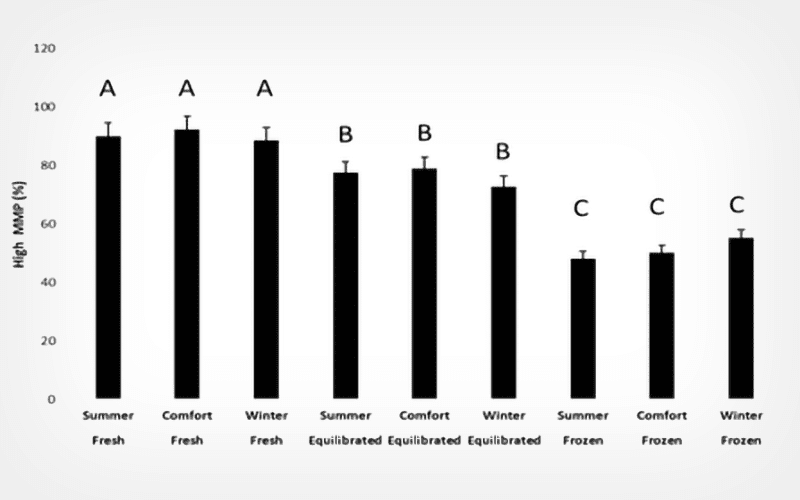CryoLetters Volume 45 - Issue 4
CryoLetters 45 (4), 194-211 (2024)
© CryoLetters, editor@cryoletters.org
doi.org/10.54680/fr24410110112
PERSPECTIVE: Semen additives for improving frozen-thawed buffalo and cattle semen – a review
Sirivati Venkatesh1, K. Murugavel2*, H. Hemalatha1, S. Kantharaj1 and G. Shalini2
- Department of Veterinary Gynaecology & Obstetrics, Rajiv Gandhi Institute of Veterinary Education & Research, Puducherry, India
- Department of Animal Reproduction, Gynaecology and Obstetrics, College of Veterinary Science, Mannuthy, Kerala, India
*Corresponding author’s E-mail: dr.murugavel@gmail.com
Abstract
This comprehensive review delves into the evolving landscape of assisted reproductive technologies (ARTs) in bovine species, particularly focusing on the pivotal roles of semen additives in the cryopreservation of buffalo and cattle semen. In developing nations, where ARTs are still emerging, these techniques significantly influence bovine reproductive strategies. In contrast, developed regions have embraced them as primary approaches for dairy buffalo and cattle breeding. Semen cryopreservation, while offering advantages like extended storage and genetic propagation, also presents challenges. These include diminished sperm quality due to reactive oxygen species (ROS) production, alterations in sperm structure, and temperature fluctuations. Further, the effect of cryopreservation differs between cattle and buffaloes, with the latter exhibiting poorer semen viability and fertility due to inherent lipid composition susceptibilities. The generation and implications of ROS, especially hydrogen peroxide, contribute significantly to sperm DNA damage and functional impairments. To counteract these challenges, research has intensified on semen additives, aiming to bolster semen quality and protect against oxidative stress-induced damage. As the field advances, the review emphasizes the need for optimized cryopreservation techniques and tailored antioxidant strategies to harness the full potential of ARTs in bovine breeding programs.
Keywords: antioxidants; buffalo semen; cryopreservation; oxidative stress; reactive oxygen species; semen additives

CryoLetters 45 (4), 212-220 (2024)
© CryoLetters, editor@cryoletters.org
doi.org/10.54680/fr24410110312
Subtle membrane changes in cryopreserved bull spermatozoa when modified temperature drop rates are used during the first phase of freezing
Alok Kumar1*, Atul Saxena1 and Mukul Anand2
- Department of Veterinary Gynaecology and Obstetrics, College of Veterinary Science, DUVASU Mathura, UP, India
- Department of Veterinary Physiology, College of Veterinary Science, DUVASU Mathura, UP, India
*Corresponding author’s E-mail: dr.alokshukla.vet@gmail.com
Abstract
Background
Cryopreservation of spermatozoa involves reduction of temperature to a subzero level, leading to increased longevity. However, temperature reduction has a significant effect on sperm membranes.
Objective
To evaluate the impact of the rate of temperature drop during the first phase of freezing on subtle membrane changes in cryopreserved bull spermatozoa.
Materials and methods
Thirty-two ejaculates from four bulls (eight ejaculates/bull) were collected using artificial vagina while keeping a 3 to 4 days gap between two collections. Diluted semen samples were equilibrated at 5°C for 4 hours. The samples were then placed in a pre-programmed semen freezer. The first phase of freezing, that is, 5°C till -10°C was subjected to three different temperature drop rates: accelerated (F1), moderate (F2), and slow (F3), at 20°C per min, 10°C per min and 5°C per min, respectively. After thawing, spermatozoa were assessed for percentage live, plasma, and acrosomal membrane integrity, along with the external appearance of phosphatidyl serine, indicating apoptosis.
Results
A significant difference (p<0.05) in viability, plasma membrane integrity (HOS test), and acrosome membrane integrity (PSA test) was observed between F3 and the other groups. However, the parameters did not significantly differ between F1 and F2. The annexin V-PI assay (AN/PI) categorized four types of sperm populations: non-apoptotic and viable (AN-/PI-), apoptotic and viable (AN+/PI-), non-apoptotic and non-viable (AN-/PI+), and apoptotic and non-viable (AN+/PI+). The proportion of spermatozoa with (AN-/PI-) and (AN+/PI+) differed significantly (p<0.05) between F3 and the other groups. The values for apoptotic and viable (AN+/PI-) and non-apoptotic and non-viable (AN-/PI+) sperm were not significantly different among all freezing categories.
Conclusion
A slower temperature drop rate (freezing rate) during the first phase of freezing results in less damaging, subtle membrane changes.
Keywords: annexin-V-PI assay; apoptosis; bull spermatozoa; temperature drop rate
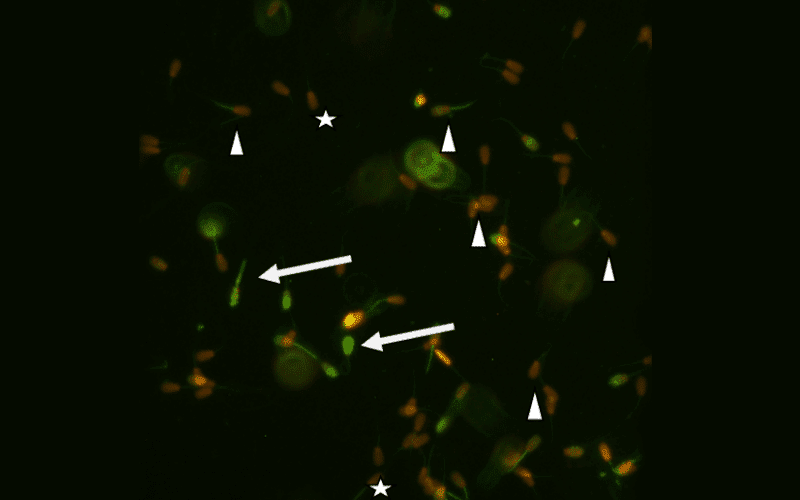
CryoLetters 45 (4), 221-230 (2024)
© CryoLetters, editor@cryoletters.org
doi.org/10.54680/fr24410110512
Potential of fructans as natural cryoprotectant agents in plant cryopreservation: concept validation on Arabidopsis thaliana L.
İrem Bakşan İlter1, Wim Van den Ende2, Tom Struyf2, Ebru Toksoy Öner3 and Yelda Özden Çiftçi1,4,5*
- Gebze Technical University, Department of Molecular Biology and Genetics, Plant Biotechnology Laboratory, Kocaeli, Turkey
- KU Leuven, Sugar Metabolism Lab and KU Leuven Plant Institute, Kasteelpark Arenberg 31, 3001 Leuven, Belgium
- IBSB, Department of Bioengineering, Marmara University, Istanbul, Turkey
- Gebze Technical University, Smart Agriculture Research and Application Center, Kocaeli, Turkey
- Gebze Technical University, Central Research Laboratory (GTU-MAR), 41400, Kocaeli, Turkey
*Corresponding author’s E-mail: ozden@gtu.edu.tr
Abstract
Background
Today, synthetic chemicals are used in vitrification solutions for cryopreservation studies to mimic natural cryoprotectants that supply tolerance to organisms in nature against freezing stress. In the case of plants, PVS2, containing glycerol, dimethyl sulfoxide (Me2SO), ethylene glycol and sucrose, is considered as the golden standard for successful cryopreservation. However, Me2SO can generally cause toxicity to certain plant cells, adversely affecting viability after freezing and/or thawing. Hence, the replacement (or substantial reduction) of Me2SO by cheap, non-toxic and natural cryoprotectants became a matter of high priority to vitrification solutions or reducing their content gained escalating importance for the cryopreservation of plants. Fructans, sucrose derivatives mainly consisting of fructose residues, are candidate cryoprotectants.
Objective
Inspired by their protective role in nature, we here explored, for the first time, the potential of an array of 8 structurally different fructans as cryoprotectants in plant cryopreservation.
Materials and methods
Arabidopsis thaliana L. seedlings were used as a model system with a one-step vitrification method. PVS2 solutions with different Me2SO and fructan contents were evaluated.
Results
It was found that branched low DP graminan, extracted from milky stage wheat kernels, led to the highest recovery (85%) among tested fructans with 12.5% Me2SO after cryopreservation, which was remarkably close to the viability (90%) observed with the original PVS2 containing 15% Me2SO. Moreover, its protective efficacy could be further optimized by addition of vitamin C acting as an antioxidant.
Conclusion
Such novel formulations offer great perspectives for cryopreservation of various crop species.
Keywords: Arabidopsis thaliana; cryopreservation; cryoprotectant; fructan
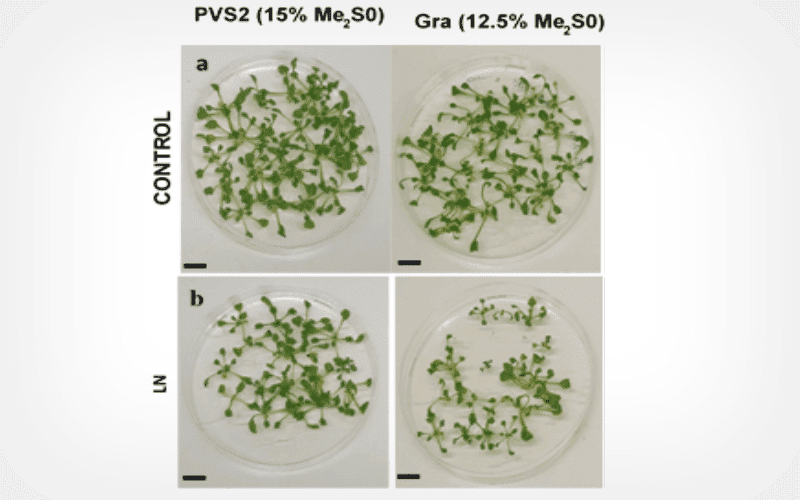
CryoLetters 45 (4), 231-239 (2024)
© CryoLetters, editor@cryoletters.org
doi.org/10.54680/fr24410110712
Influence of hydrogen bonds on state diagrams of cryoprotectant solutions
O.I. Osetsky*
- Institute for Problems of Cryobiology and Cryomedicine of the National Academy of Sciences of Ukraine, Kharkiv, Ukraine
*Corresponding author’s E-mail: cryoo@ukr.net
Abstract
Background
Transformation of state diagrams of cryoprotectant solutions under the influence of weak intramolecular interactions was considered.
Materials and methods
Phase states of aqueous glycerol and DMSO solutions within temperature range +25…-150°С were studied using method of volumetric scanning tensodilatometry. Temperatures below which hydrogen bonds significantly affect crystallization-melting kinetics of such solutions were determined.
Results
Principles for plotting of state diagram for binary solutions with weak intermolecular interaction of the components were set up. The study demonstrates that in such solutions formation of clusters based on ice microcrystals and cryoprotectant occurs. Based on the obtained results, state diagrams for glycerol and DMSO aqueous solutions were plotted. These diagrams include area of cluster phase existence and differ fundamentally from those describing eutectic crystallization.
Conclusion
Nanostructures occurring in cryoprotectant solutions during their cooling were analyzed. Difference between these structures and classical solid phase eutectics were demonstrated.
Keywords: cluster crystallization; critical nucleation center; scanning tensodilatometer; state diagram hydrogen bonds; vitrification; volume change
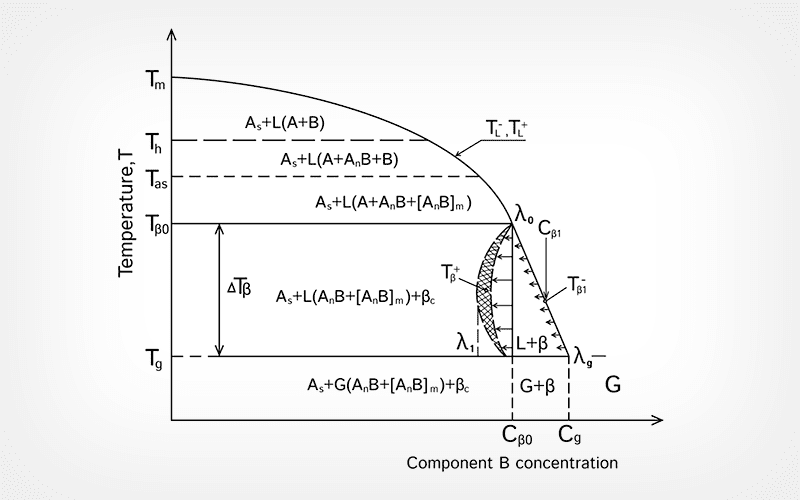
CryoLetters 45 (4), 240-247 (2024)
© CryoLetters, editor@cryoletters.org
doi.org/10.54680/fr24410110212
Effect of various antioxidants on ovarian tissue vitrification success in sheep
Masrat un Nisa1, Asloob Ahmad Malik1*, Khursheed Ahmad Sofi2, Beenish Qureshi3, Afzal Hoque Akand4, Showkat Ahmad Shah5, Tanveer Mushtaq1, Nahida Yousuf1 and Pawanpreet Singh1
- Division of Animal Reproduction, Gynaecology & Obstetrics,
- Division of Veterinary Clinical Complex,
- Division of Veterinary Surgery and Radiology,
- Division of Veterinary and Animal Husbandry Extension,
- Division of Veterinary Pathology,
Faculty of Veterinary Sciences and Animal Husbandry, Shere-e-Kashmir University of Agricultural Sciences and Technology of Kashmir, Shuhama, Srinagar, India-190006
*Corresponding author’s E-mail: malikasloob@gmail.com
Abstract
Background
Vitrification is a technique of cryopreservation that has been proposed as a promising alternative method for the preservation of oocytes, embryos and gonadal tissue.
Objective
To determine the effect of different antioxidants on post-thaw viability, morphology of retrieved oocytes and histology of vitrified ovarian tissue.
Materials and methods
Four different antioxidants [i.e., resveratrol (20 μM), ZnSO4 (500 μM), curcumin (25 μM) and quercetin (1 μM)] were evaluated after their addition to the vitrification and warming media for their effects on the viability and morphology of retrieved oocytes and the histology of vitrified ovarian tissue.
Results
The number of oocytes retrieved from ovarian tissue from the above mentioned antioxidants and vitrified control were 34, 41, 26, 31 and 46 respectively. Among these the number of viable oocytes were found to be 24 (70.6%), 30 (73.1 %), 20 (76.9%), 26 (83.9%) and 33 (71.7%) and the number of oocytes found morphologically normal were 24 (70.6%), 26 (63.4%), 18 (69.2%), 21 (67.7%) and 34 (73.9%) for the above mentioned different antioxidants and vitrified control, respectively. Non-significant (P>0.05) differences were found between different treatment groups. Histomorphological evaluation of the ovarian cortical tissue showed that the percentage of intact follicles was significantly (P⋜0.05) higher in the fresh control (84.19±3.9) than in other groups. Non-significant differences were found between resveratrol (50.2±5.5), curcumin (48.7±5.7), quercetin (51.6±4.8) and the vitrified control (42.7±6.1) groups; however, the ZnSO4 supplemented group (23.1±8.54) differed significantly (P≤0.05) from other antioxidant groups but was non-significant (P>0.05) with the vitrified control group (42.7±6.1).
Conclusion
The addition of antioxidants resveratrol, curcumin and quercetin at these concentrations tended to non-significantly improve the follicular integrity after vitrification.
Keywords: follicle; histology; morphology; zinc sulphate
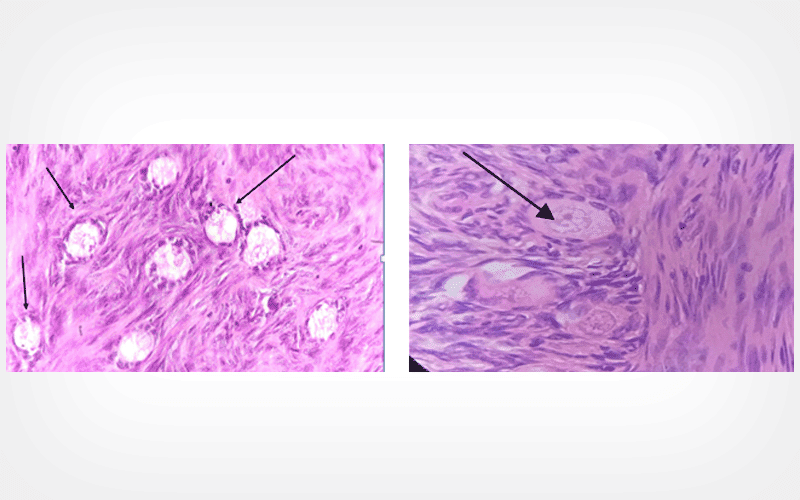
CryoLetters 45 (4), 248-256 (2024)
© CryoLetters, editor@cryoletters.org
doi.org/10.54680/fr24410110412
Micropropagation and cryopreservation of the rare endemic Colchicum figlalii germplasm
Ergun Kaya1*, Onur Koyuncu2, Özhan Şimşek3, Pembe Evci Çürük4 and Yeşim Yalçın Mendi5*
- Muğla Sıtkı Koçman University, Faculty of Science, Molecular Biology and Genetics Department, 48000, Muğla, Turkey
- Eskişehir Osmangazi Univerity, Special Education Application and Research Center, 26040 Odunpazarı-Eskişehir, Turkey
- Erciyes University, Seyrani Faculty of Agriculture, Department of Horticulture, 38030, Melikgazi-Kayseri, Turkey
- Osmaniye Korkut Ata University, Kadirli School of Applied Sciences, 80760, Kadirli-Osmaniye, Turkey
- Çukurova University, Faculty of Agriculture, Department of Horticulture, 01250 Sarıçam-Adana, Turkey
*Corresponding authors’ E-mails: ergunkaya@mu.edu.tr and yesimcan@cu.edu.tr
Abstract
Background
The natural population of Colchicum figlalii (Varol) Parolly & Eren grows in a narrow area of serpentine rock clearings at an altitude of 1900-2100 m in Southwestern Anatolia (Sandras Mountain, Mugla, Turkey). The species is regarded as endangered according to the IUCN Red List Categories.
Objective
To develop an optimum procedure for in vitro propagation and cryopreservation of germplasm of this rare endemic.
Materials and methods
A total of 281 bulbs were used as in vitro culture starting material and after surface sterilization, clean material was obtained from 157 of them. Woody Plant Medium (WPM), Olive Medium (OM), and Murashige and Skoog medium (MS) were used for in vitro culture establishment.
Results
The maximum regeneration rate (~67.3%) was obtained after four weeks of incubation on OM. The calli were successfully induced by using OM supplemented with 10.7 μM NAA from leaves of in vitro grown C. figlalii bulbs. A PVS2-vitrification procedure was used for cryopreservation of C. figlalii callus tissue. After cryo-storage, the best result for regeneration (66.7%) was obtained from calli treated with PVS2 for 75 min before plunging into liquid nitrogen. All rooted seedlings derived from cryopreserved calli were successfully acclimatized to greenhouse conditions.
Conclusion
This study is an effective reference for future long-term conservation of similar species that are difficult to cryopreserve.
Keywords: Colchicum figlalii; cryopreservation; DMSO; PVS2; somatic embryogenesis; vitrification
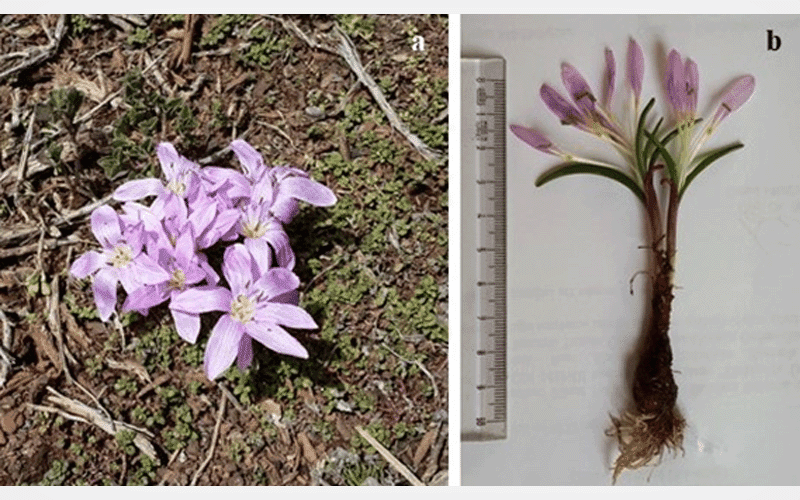
CryoLetters 45 (4), 257-268 (2024)
© CryoLetters, editor@cryoletters.org
doi.org/10.54680/fr24410110612
Cryopreservation alters buffalo sperm kinematics and mitochondrial parameters, acrosome and intra-cellular calcium status
D. Kumar1,2*, J. S. Mehta2, A. Jerome1*, P. Kumar1, D. Kumar1, S. Bhardwaj1, C.S. Patil3, R. Bala1, N. Verma1, Satish1,2, M. Virmani3, R. K. Sharma1 and P. Singh4
- ICAR-Central Institute for Research on Buffaloes, Hisar, Haryana, India
- College of Veterinary and Animal Science, Rajasthan University of Veterinary and Animal Sciences, Bikaner, Rajasthan, India
- Lala Lajpat Rai University of Veterinary and Animal Sciences, Hisar, Haryana, India
- ICAR-National Dairy Research Institute, Karnal, Haryana, India
*Corresponding author’s E-mail: jerome.A@icar.gov.in or jerome210982@gmail.com
Abstract
Background
Little is known about the effects of different seasons on the cryopreservation success of buffalo sperm in terms of kinematics and sperm functional parameters.
Objective
To study the effect of three seasons (winter, comfort and summer) and cryopreservation on sperm kinematics and functional properties in buffalo bulls.
Materials and methods
Semen ejaculates (n = 90) collected during three seasons i.e. winter (n = 30), comfort (n = 30), summer (n = 30) were evaluated for sperm kinematics and functional properties.
Results
Sperm kinematics with respect to total (TM), progressive (PM) and rapid motility (RM) was higher (P<0.05) in fresh sperm compared to sperm that had been frozen-thawed. Similarly, all kinematic parameters [viz. average path velocity (VAP), straight linear velocity (VSL), curvilinear velocity (VCL), beats cross frequency (BCF), lateral head displacement (ALH), linearity (LIN) and straightness (STR)] were higher (P<0.01) at the fresh stage. With respect to season, frozen-thawed semen TM (57.67 ± 115 %), PM (50.2 ± 1.15 %) and RM (51.6 ± 1.19 %) were higher (P<0.01) when using sperm collected during winter. The stage of cryopreservation (i.e., equilibration and freeze-thawing) also showed significant effects (P<0.01) on mitochondrial superoxide positive status (MSPS), mitochondrial membrane potential (MMP), acrosome status and intra-cellular calcium status.
Conclusion
The season of sperm collection and cryopreservation have significant effects on buffalo bull sperm kinematics and functional properties.
Keywords: buffalo; cryopreservation; mitochondrial membrane potential; season; sperm; superoxide
